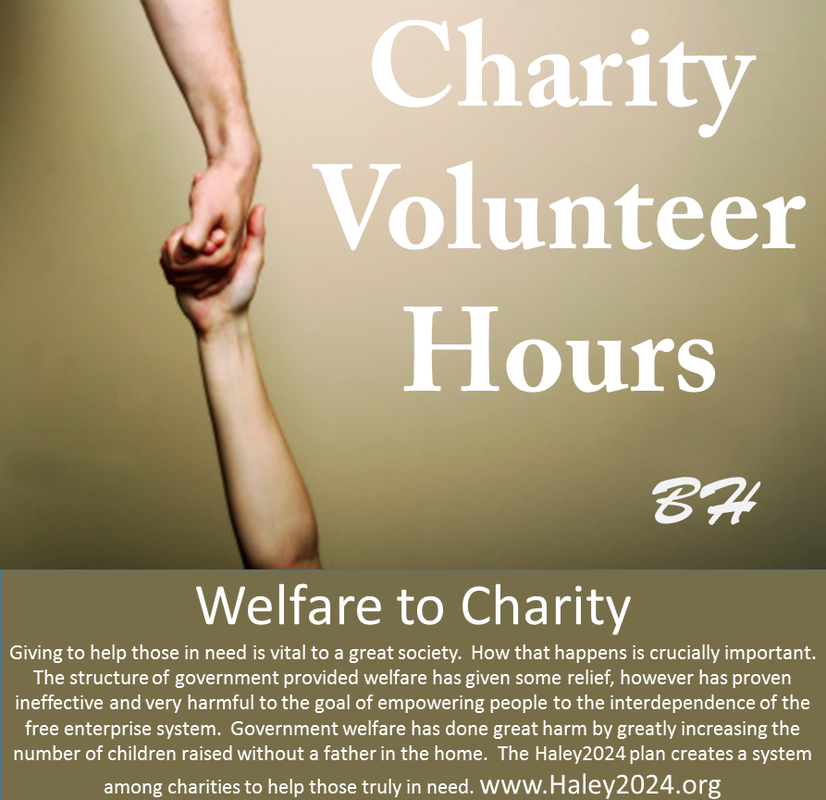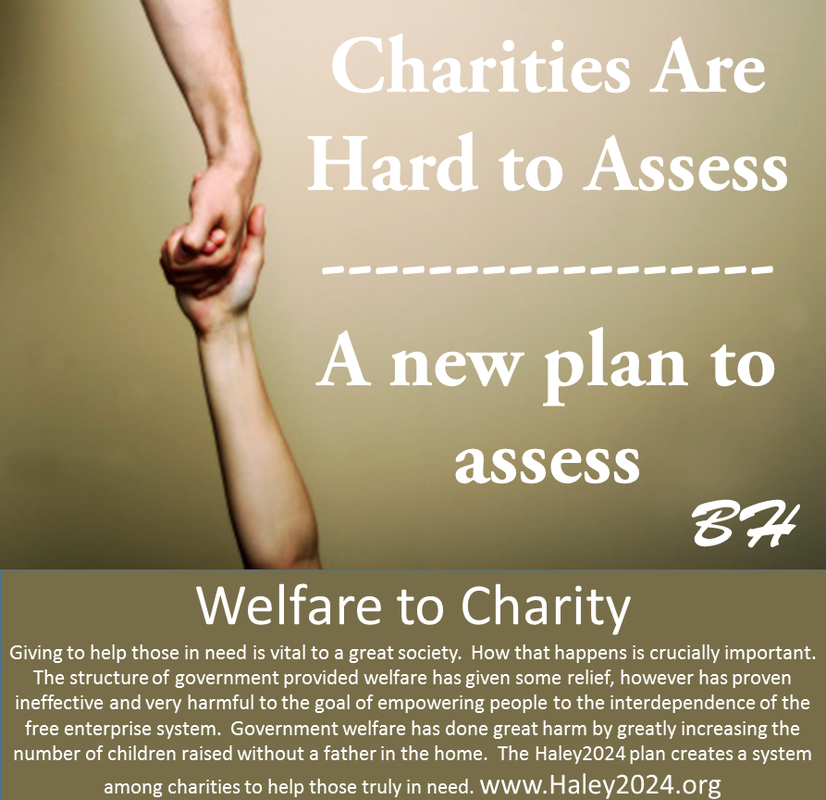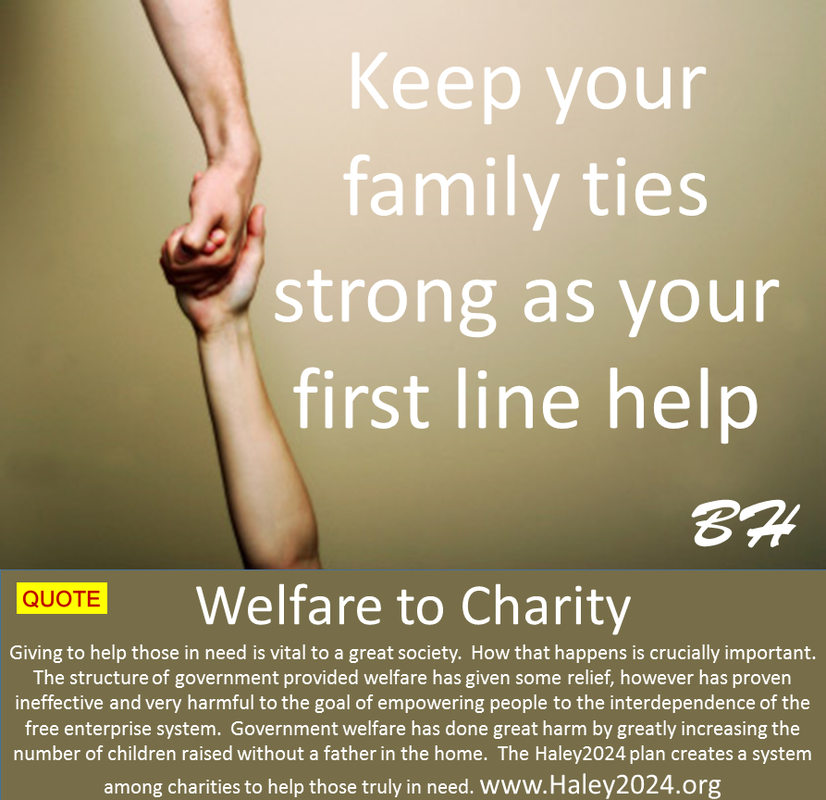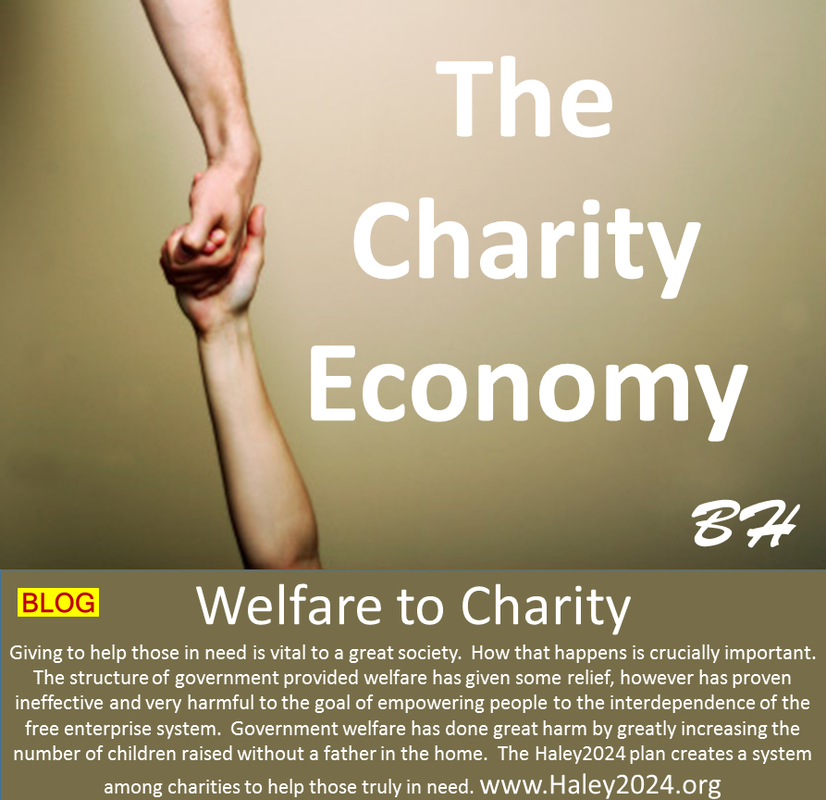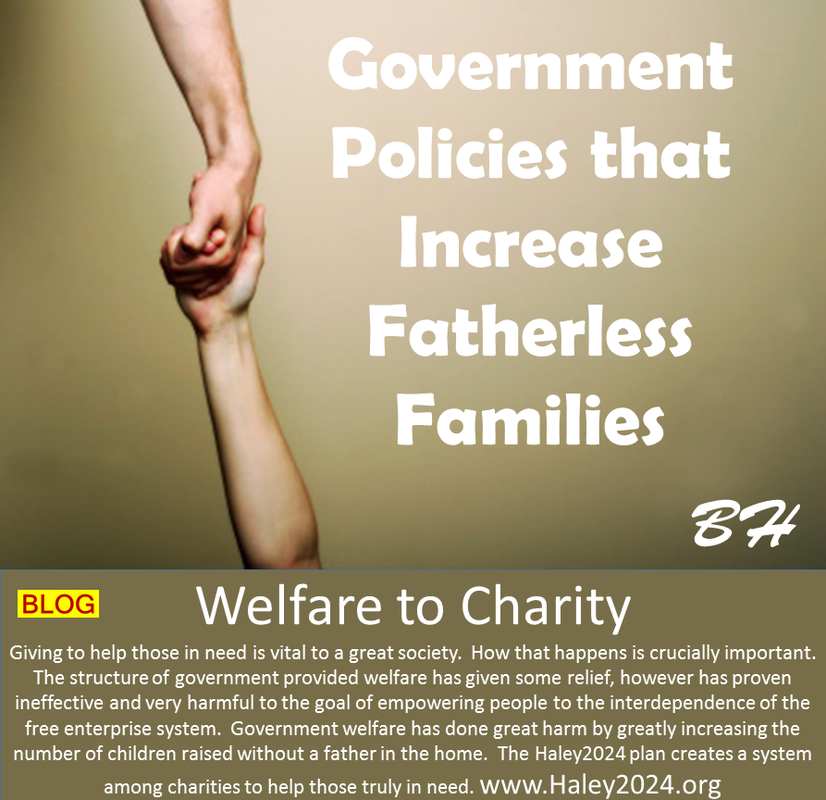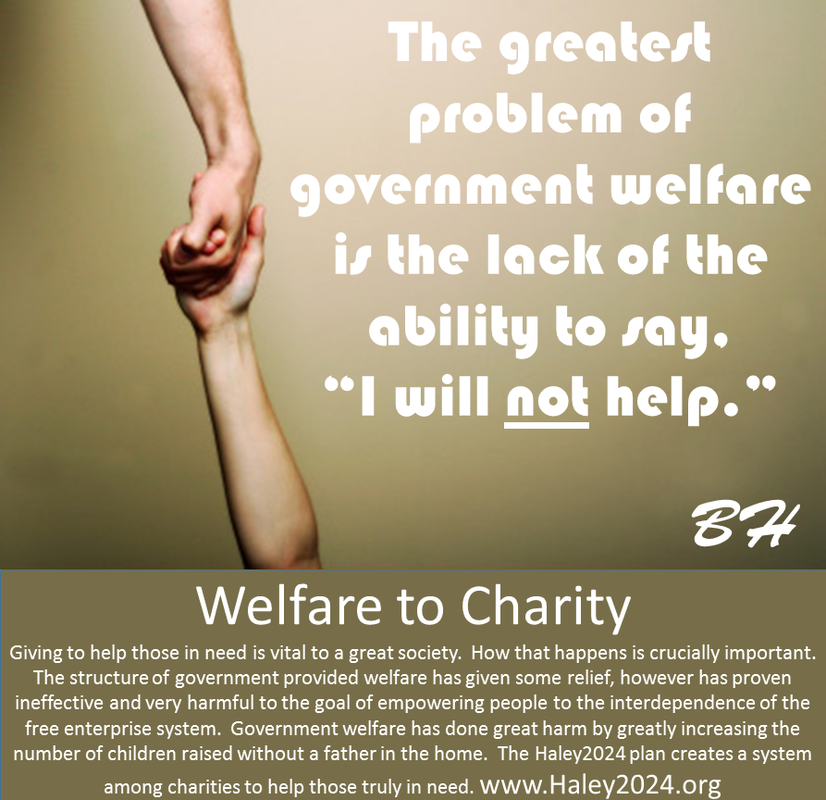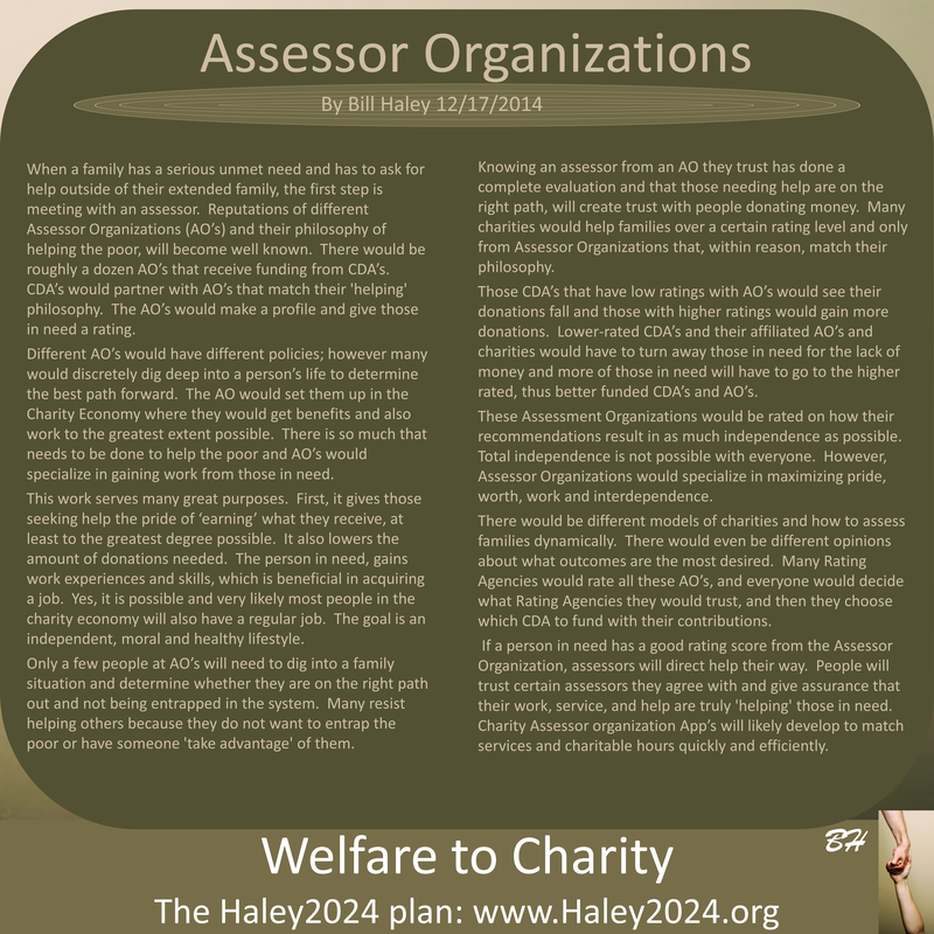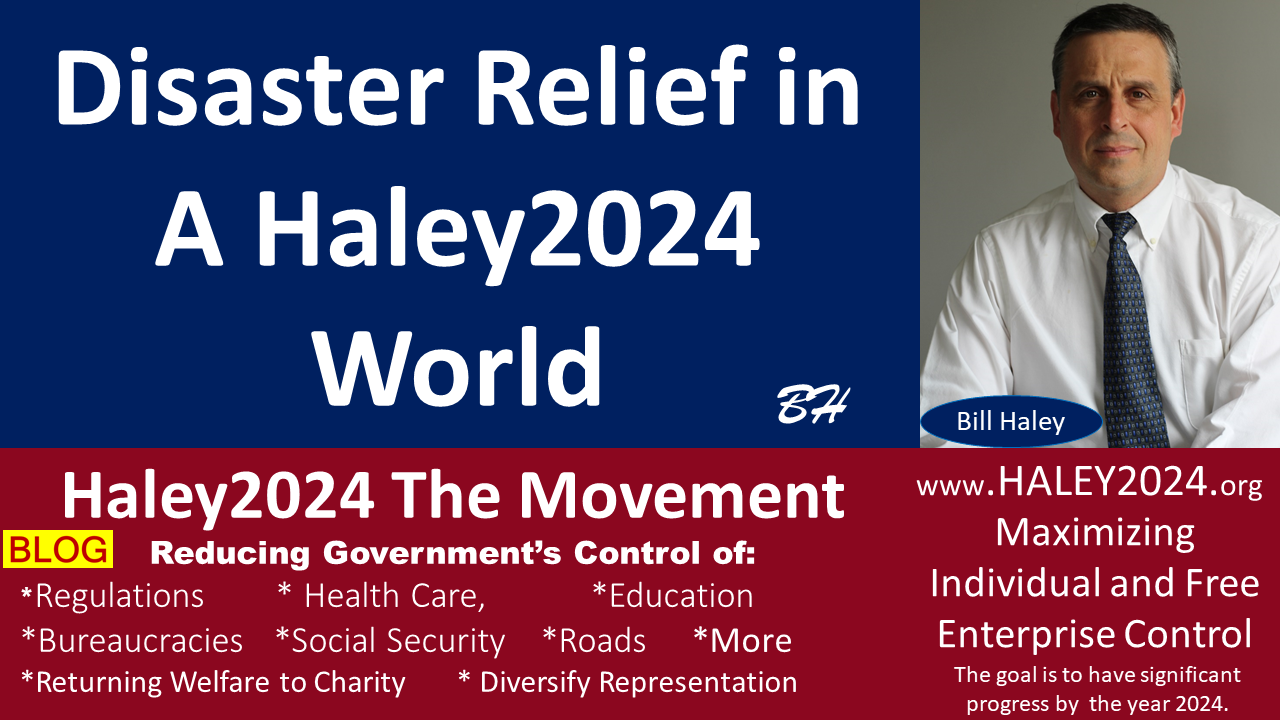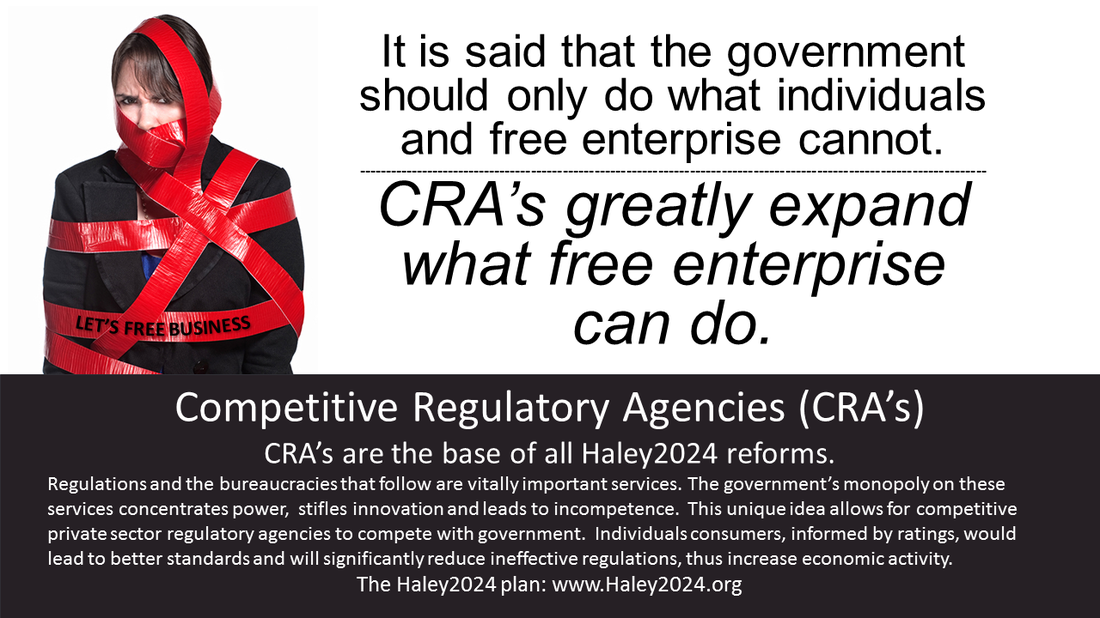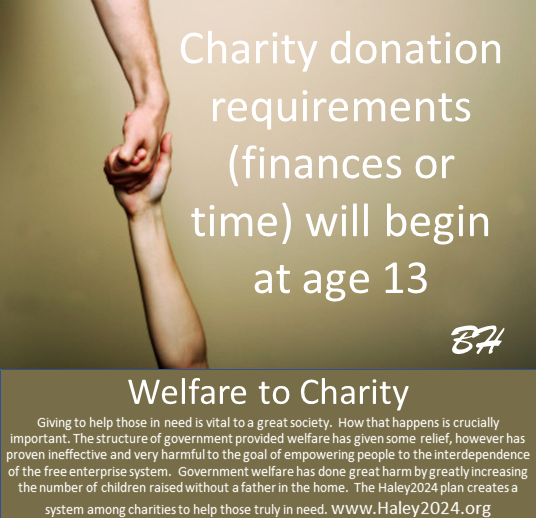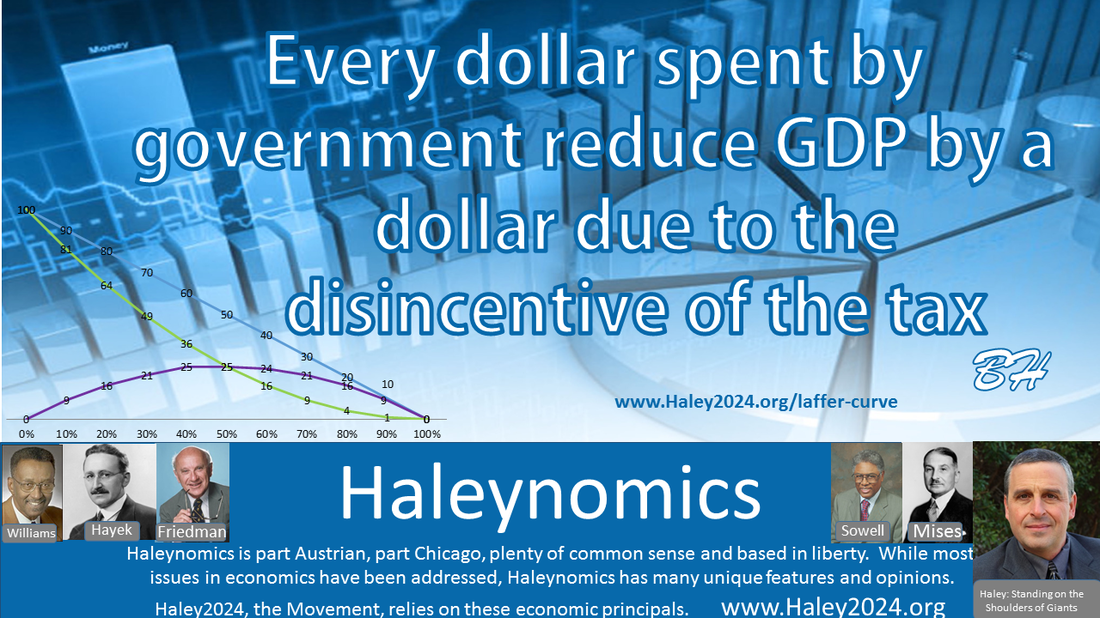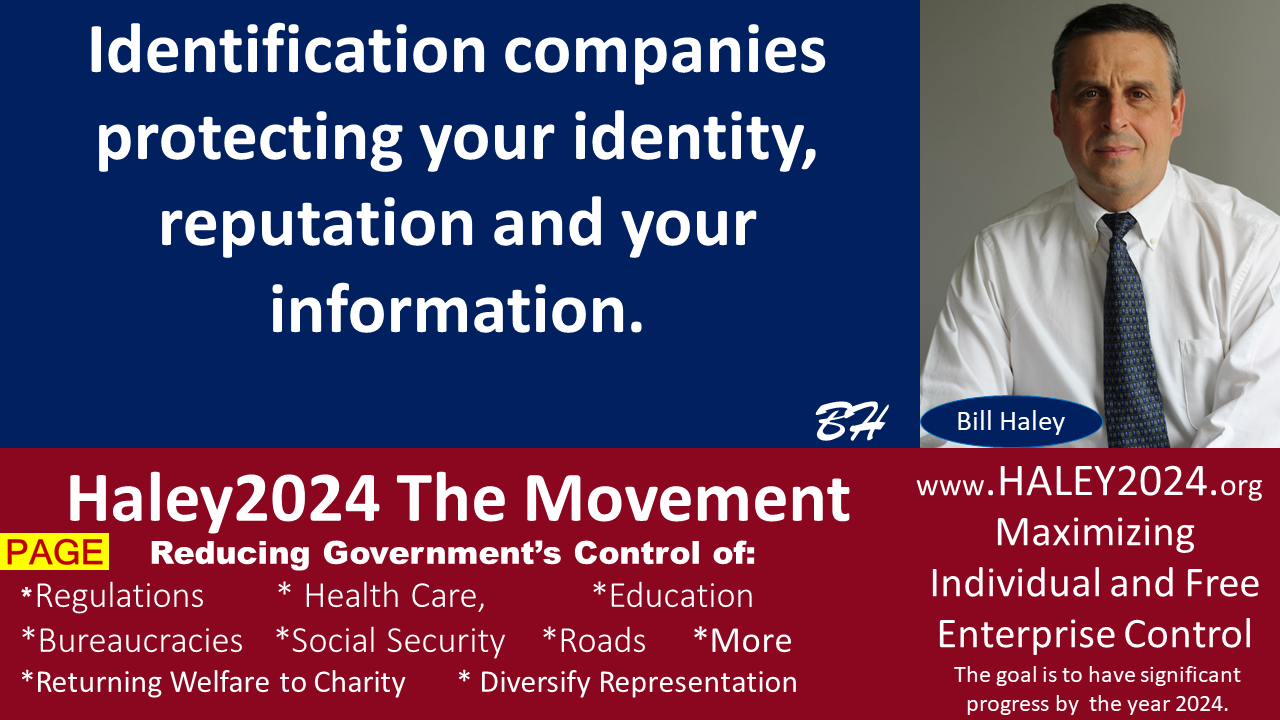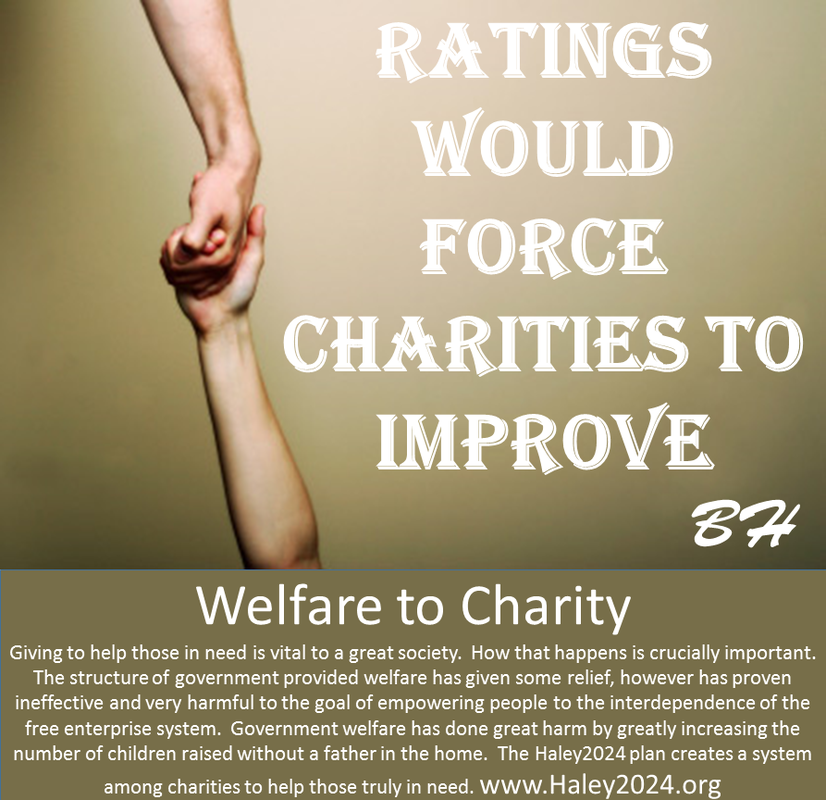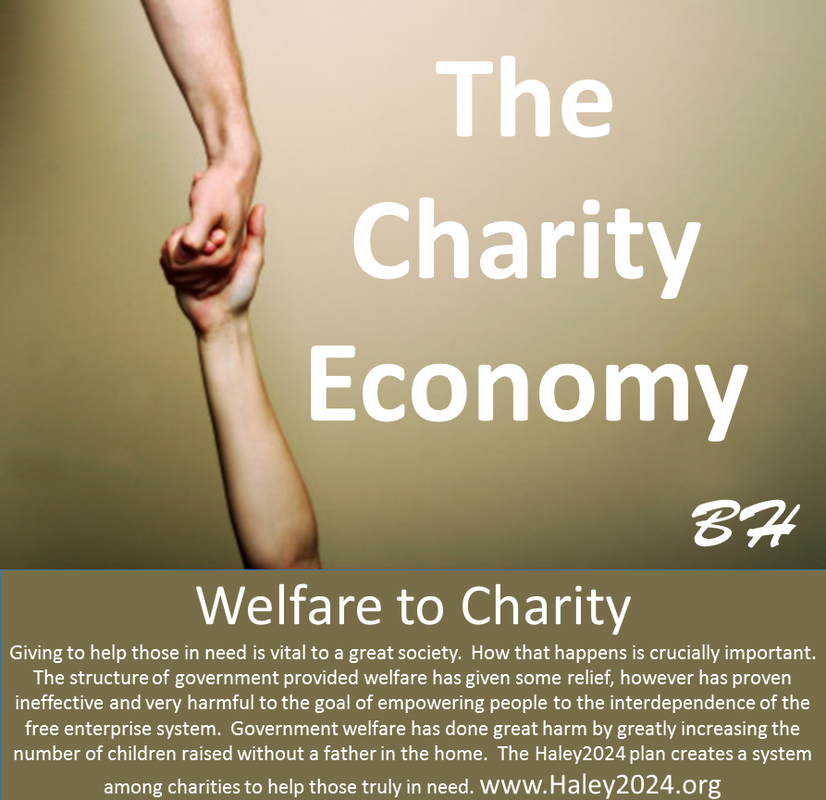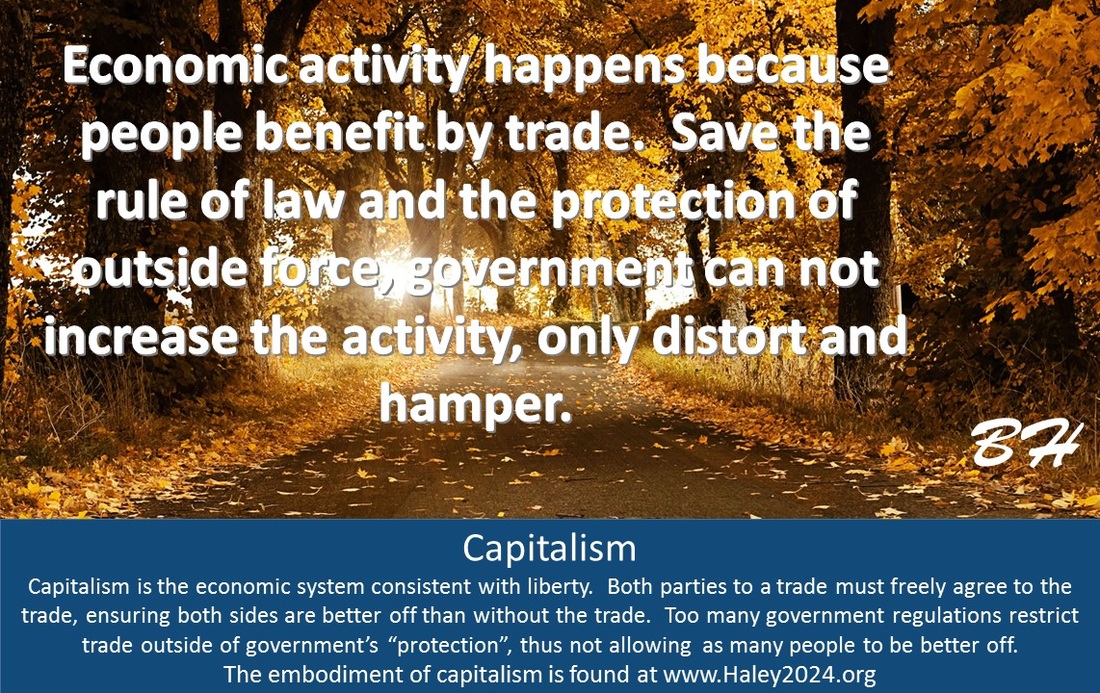| When a family has a serious unmet need and has to ask for help outside of their extended family, the first step is meeting with an assessor. Reputations of different Assessor Organizations (AO’s) and their philosophy of helping the poor, will become well known. There would be roughly a dozen AO’s that receive funding from CDA’s. CDA’s would partner with AO’s that match their 'helping' philosophy. The AO’s would make a profile and give those in need a rating. |
| Different AO’s would have different policies; however many would discretely dig deep into a person’s life to determine the best path forward. The AO would set them up in the Charity Economy where they would get benefits and also work to the greatest extent possible. There is so much that needs to be done to help the poor and AO’s would specialize in gaining work from those in need. |
| This work serves many great purposes. First, it gives those seeking help the pride of ‘earning’ what they receive, at least to the greatest degree possible. It also lowers the amount of donations needed. The person in need, gains work experiences and skills, which is beneficial in acquiring a job. Yes, it is possible and very likely most people in the charity economy will also have a regular job. The goal is an independent, moral and healthy lifestyle. |
| Knowing an assessor from an AO they trust has done a complete evaluation and that those needing help are on the right path, will create trust with people donating money. Many charities would help families over a certain rating level and only from Assessor Organizations that, within reason, match their philosophy. |
| Those CDA’s that have low ratings with AO’s would see their donations fall and those with higher ratings would gain more donations. Lower-rated CDA’s and their affiliated AO’s and charities would have to turn away those in need for the lack of money and more of those in need will have to go to the higher rated, thus better funded CDA’s and AO’s. |
| There would be different models of charities and how to assess families dynamically. There would even be different opinions about what outcomes are the most desired. Many Rating Agencies would rate all these AO’s, and everyone would decide what Rating Agencies they would trust, and then they choose which CDA to fund with their contributions. |
| If a person in need has a good rating score from the Assessor Organization, assessors will direct help their way. People will trust certain assessors they agree with and give assurance that their work, service, and help are truly 'helping' those in need. Charity Assessor organization App’s will likely develop to match services and charitable hours quickly and efficiently. |



